SMOKE-FREE MULTI-UNIT HOUSING

benefits of
smoke-free housing
In Philadelphia, far too many non-smokers are still getting exposed to secondhand smoke at home. As the 2006 Surgeon General’s report stated, there is no safe level of secondhand smoke, especially indoors where people spend up to 90% of their time.
In multi-unit housing, secondhand smoke can travel through hallways, ventilation systems, fixtures and even through cracks between units. Adopting a smoke-free policy can help prevent renters’ exposure to secondhand smoke and save landlords money.
The benefits of smoke-free housing policy include:
Housing Market Advantage
- Surveys show over 78% of renters prefer smoke-free living spaces
- Smoke-free policies improve resale opportunities
Read More
Preventing Property Damage
- Turnover of a heavy smoker’s unit can cost 6 times more than that of a non-smoker’s unit.
- A dropped cigarette can smolder for up to 30-45 minutes on fabric, causing a fire.
Read More
Saving on Insurance Premiums
- Some insurance companies offer discounted fire, life and property rates for smoke-free buildings.
Read More
Know the law:
The Philadelphia Clean Indoor Air Worker Protection Law prohibits smoking in all enclosed areas and within 20 feet of any entrance to buildings into which the general public is invited or routinely permitted. This includes lobbies, hallways, stairwells, and other common areas in apartment buildings, condominiums, nursing homes and other multiunit buildings.
- Let your building manager know if you observe smoking activities or smell secondhand smoke in the areas indicated above.
- Ask if additional and prominent No-Smoking signs can be posted in common areas and 20 feet from the building entrance.
Smoking Disclosure Policy requires that landlords of multi-unit housing properties (three or more units), provide renters written information regarding their building rules on smoking. As mandated by the Smoking Disclosure Policy, a landlord who enters into a new rental agreement with a prospective tenant or renews a lease for tenancy for a multiunit housing must provide to the tenant or prospective tenant, the building smoking policy. The disclosure shall state whether smoking is prohibited in all dwelling units, permitted in all dwelling units or permitted in some dwelling units. A complete version of the Smoking Disclosure Policy in Multi-Family Building can be found at
- If you are moving into a new apartment or renewing your lease, ask management about the building policy related to smoking before you decide to move in or renew your lease.
- If your find out that smoking is allowed in units, then consider looking for smoke-free apartment.
Resources for Renters and Owner-Occupied Residents
Do you keep your apartment smoke-free, but still get exposed to the secondhand smoke coming from your neighbor’s unit and the common areas of your building?
Here are some action steps that you can take:
Document secondhand smoke entering your apartment
- When do you usually smell the secondhand smoke in your apartment?
- Is it causing/ worsening health problems (e.g. respiratory conditions)?
- Where do you think the smoke is entering apartment?
- Whose apartment do you think the smoke comes from?
Watch Now
Gather information
- What are the health risks of secondhand smoke?
- How does secondhand smoke travel in apartment buildings?
- What are the benefits of smoke-free multiunit policy?
- Does smoking indoors increase the risks of residential fires?
- Is it legal for landlords and property managers to implement smoke-free policy?
Contact Us
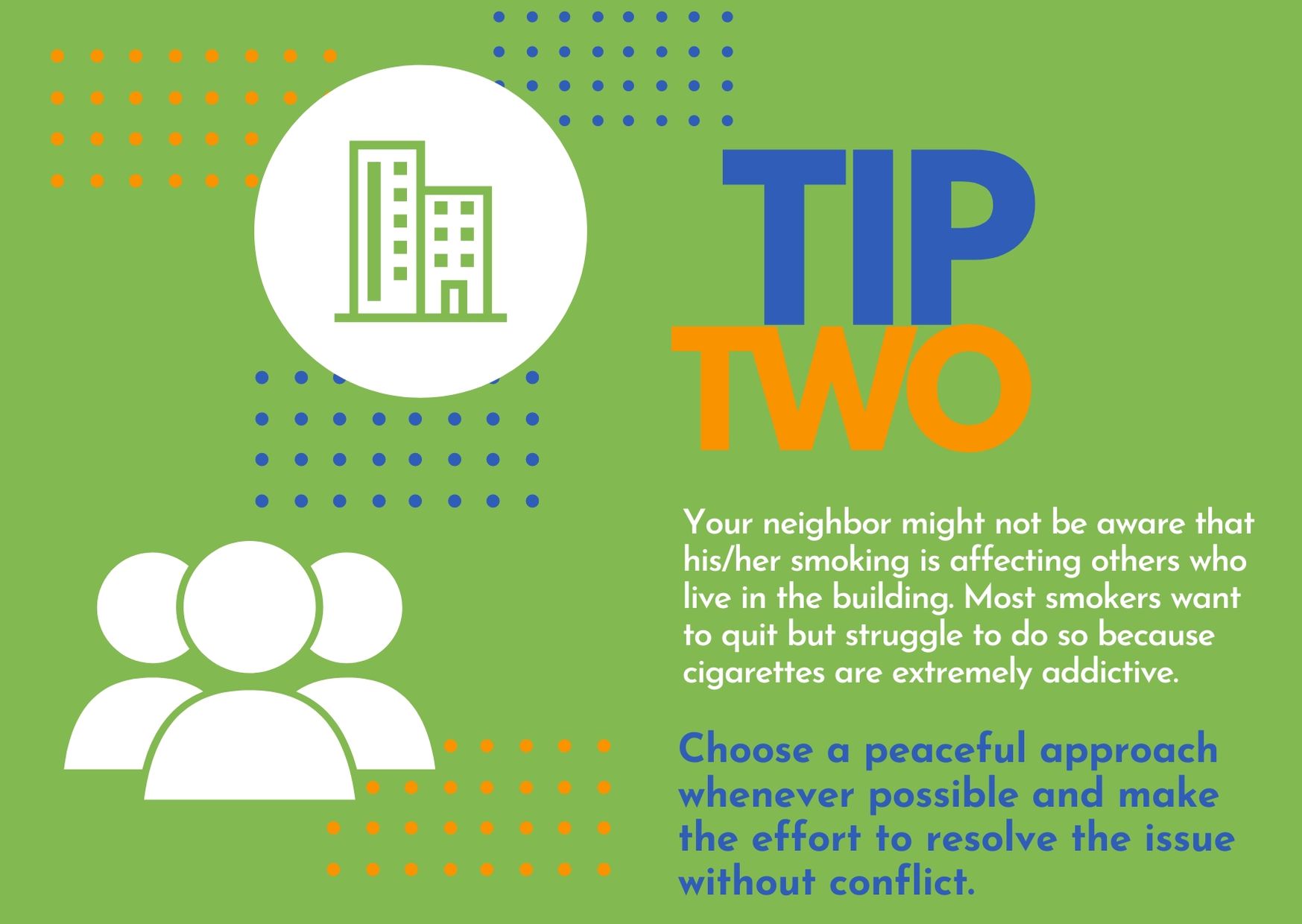
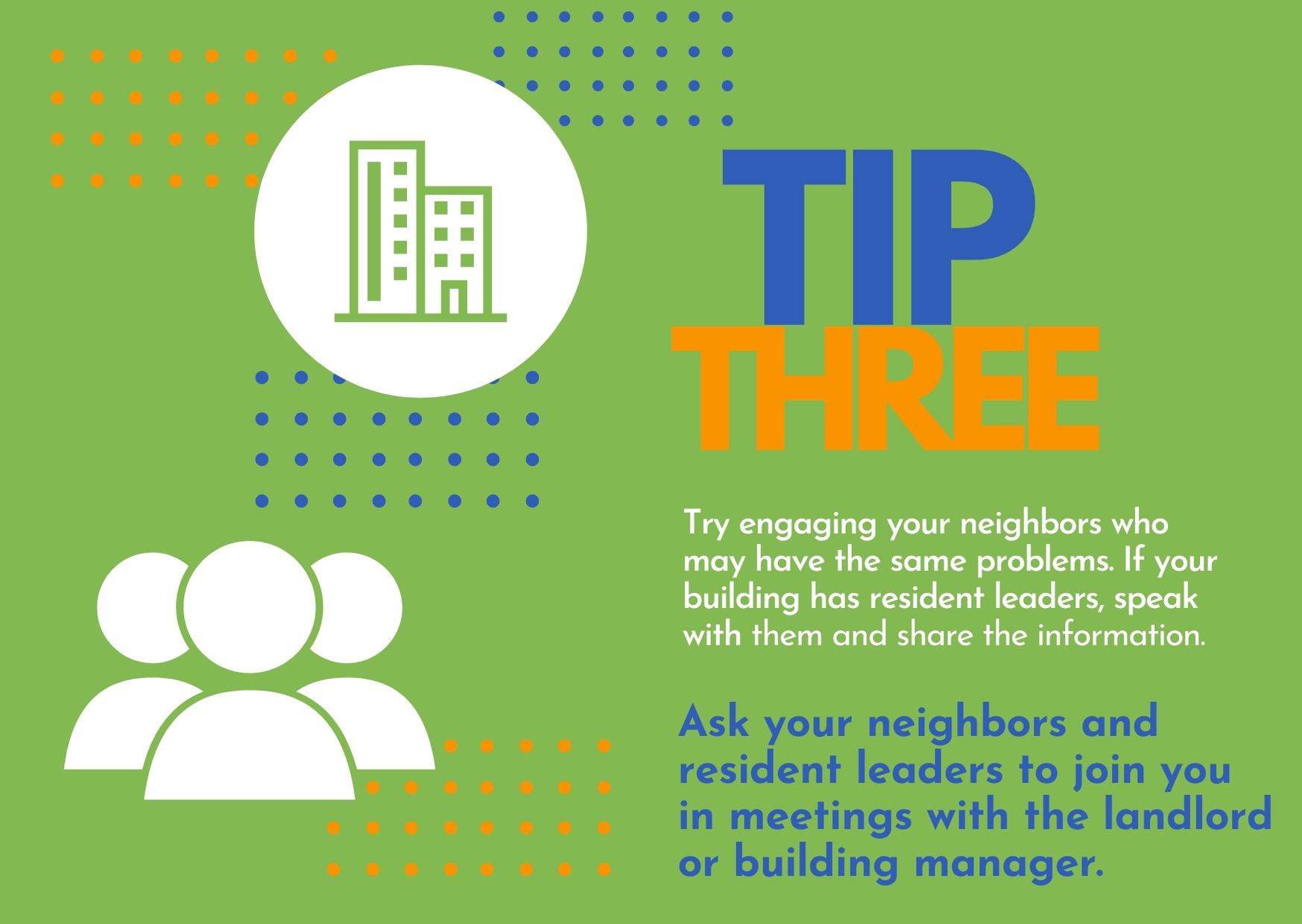
Contact your landlord or building manager
- Talk to your landlord or building manager about secondhand smoke entering your apartment unit and share the information about the problem.
- Voice support for a house rule that prohibits smoking indoors, including units, balcony, hallways, stairwells, elevators, community rooms and all other common areas.
- Follow-up with letter to your landlord or building manager.
- If management owns or operates another apartment with smoke-free policy already in place, make a request to be moved to the smoke-free building.
- If you live in a condominium or co-op, follow steps 1 & 2, report the problem to your building association and make efforts to participate in association meetings to discuss the issue of secondhand smoke drifting into your apartment.
Visit Us
Resources for Landlords and Property Managers
XYZ
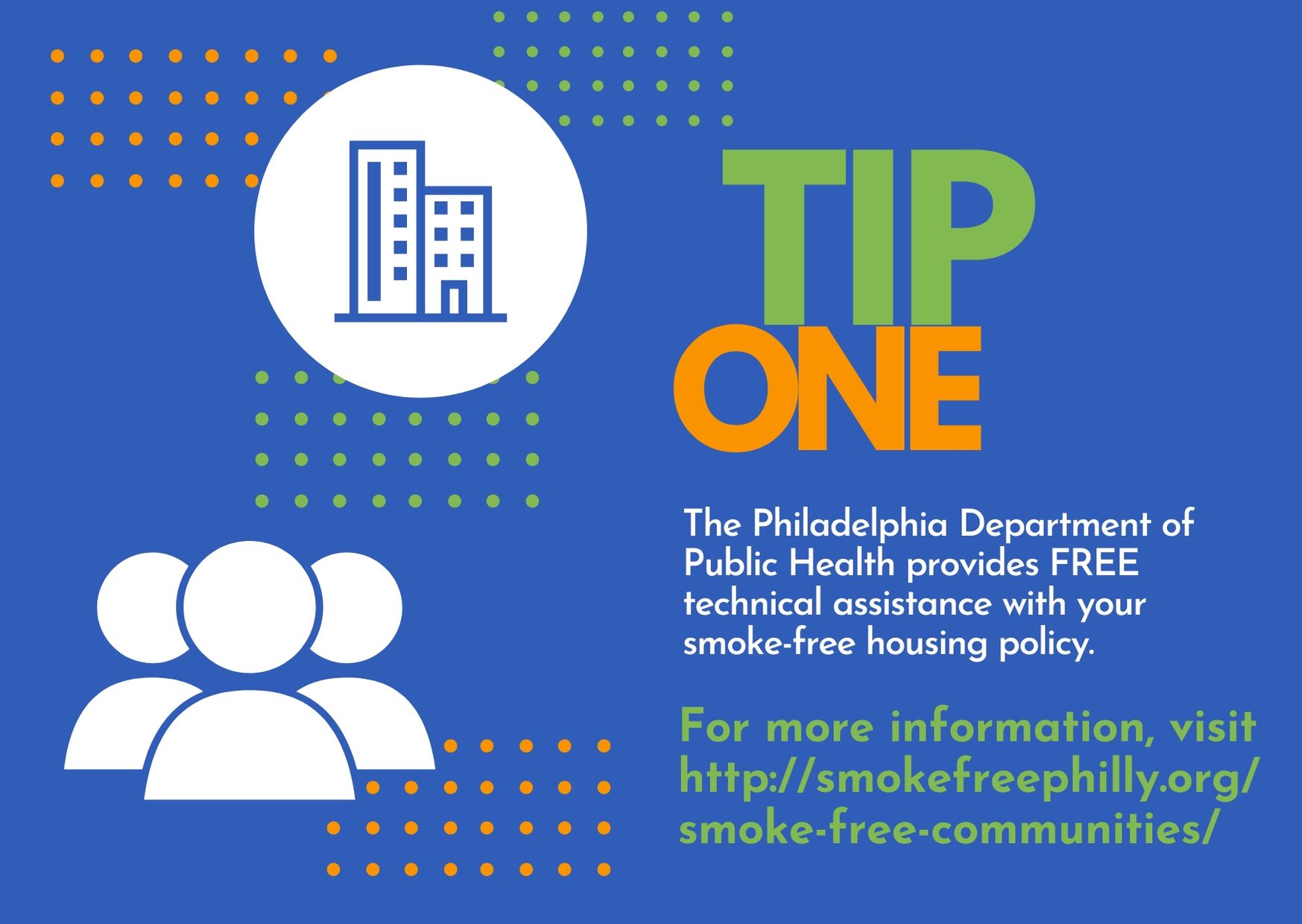
Develop a smoke-free policy&set a timeline
- Review smoke-free policy options and examples:
- Following your organization’s management process, begin the preparation of policy documents (e.g. lease addendum, notification letters, etc.).
- Schedule staff training, renters meeting, lease addendum signing, and policy implementation dates.
- Contact potential community partner(s) to assist with policy development, staff training and resident outreach. (Optional)
Watch Now
Educate staff&renters
- Conduct staff training and meeting to discuss policy details and planned activities.
- Consider a renter survey to explore understand common knowledge about secondhand smoke and smoke-free housing rules.
- Lead a renters meeting to discuss the plan for smoke-free housing including how to do it, why it should be done, timeline, steps to enforce, and sharing quit resources.
- Send out notification letters to inform renters about the policy at least 60 days prior to the policy effective date.
Contact Us
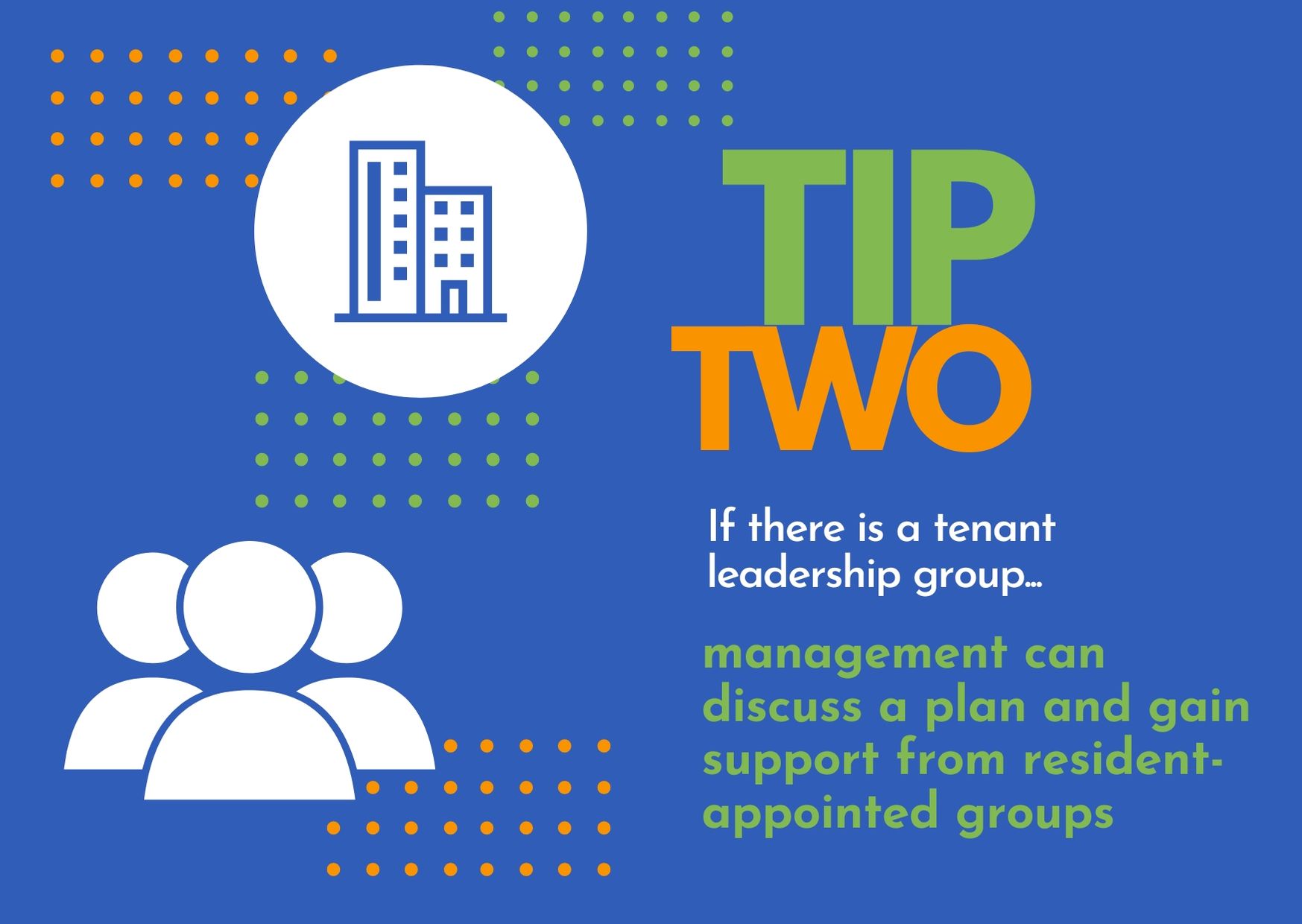
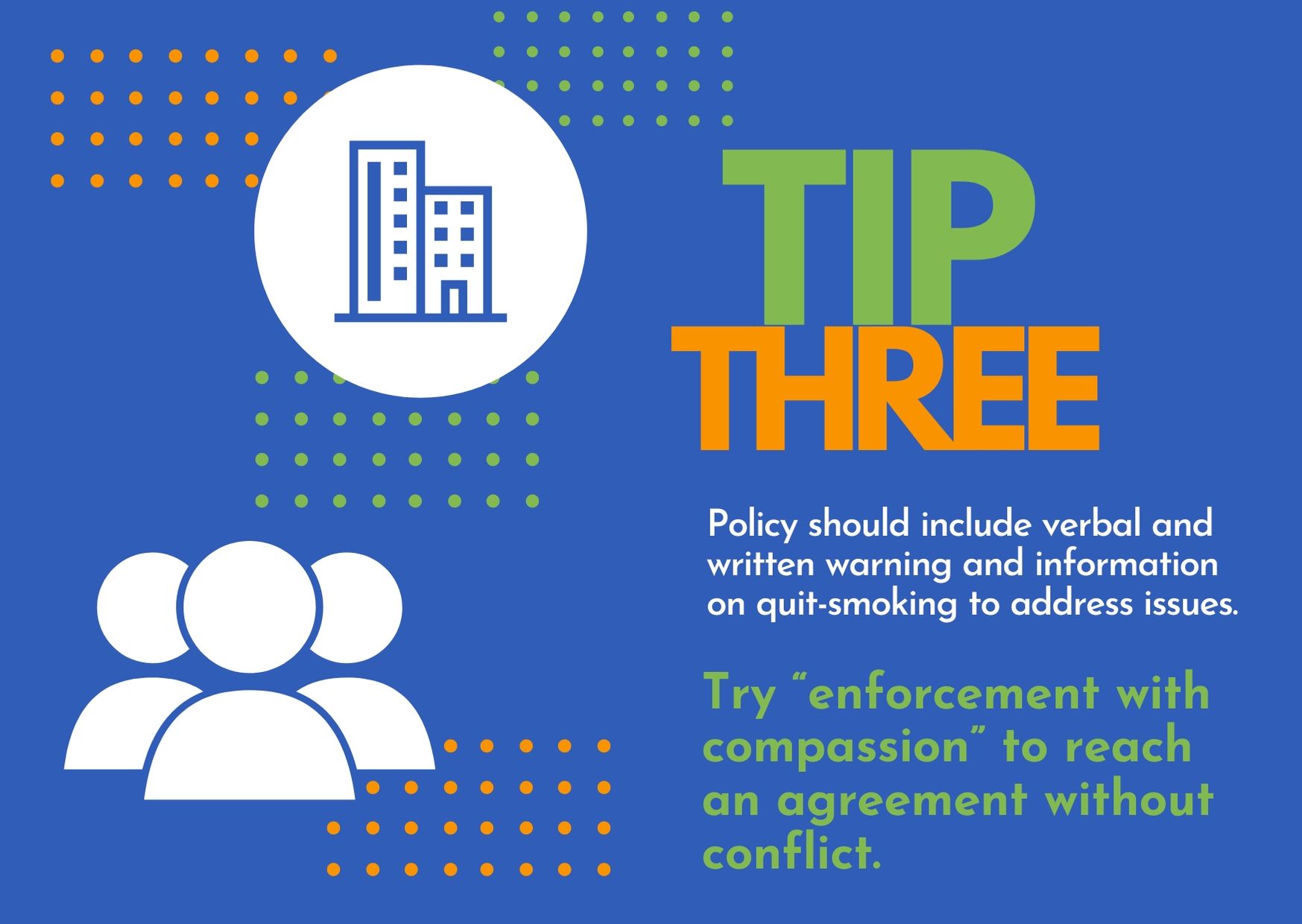
Implement&enforce your policy
- Ensure that renters have an opportunity to review and sign the new lease addendum or amendment in which smoke-free policy is incorporated.
- Convene renters meeting to address questions and concerns and disseminate quit-smoking resources.
- Remove tobacco receptacles and ashtrays from common areas and post prominent No-Smoking signs.
- Review the enforcement procedure regularly with building staff and stay committed to promoting and enforcing the new smoke-free housing policy.